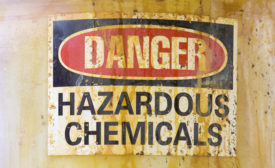ARTICLES
A FairWarning story
Open burning at U.S. military sites inflames activists in nearby towns
May 4, 2017
A FairWarning story
Novel strategy for dealing with toxic contamination: Do nothing
March 2, 2017
Become a Leader in Safety Culture
Build your knowledge with ISHN, covering key safety, health and industrial hygiene news, products, and trends.
JOIN TODAYCopyright ©2025. All Rights Reserved BNP Media.
Design, CMS, Hosting & Web Development :: ePublishing


